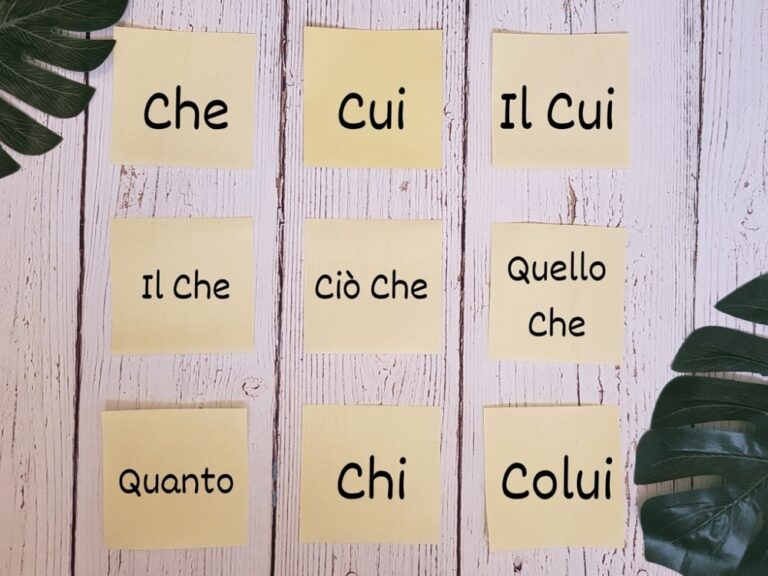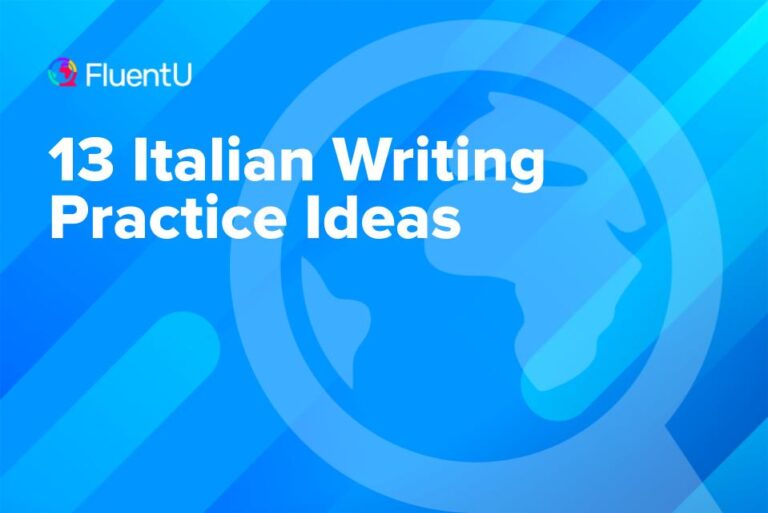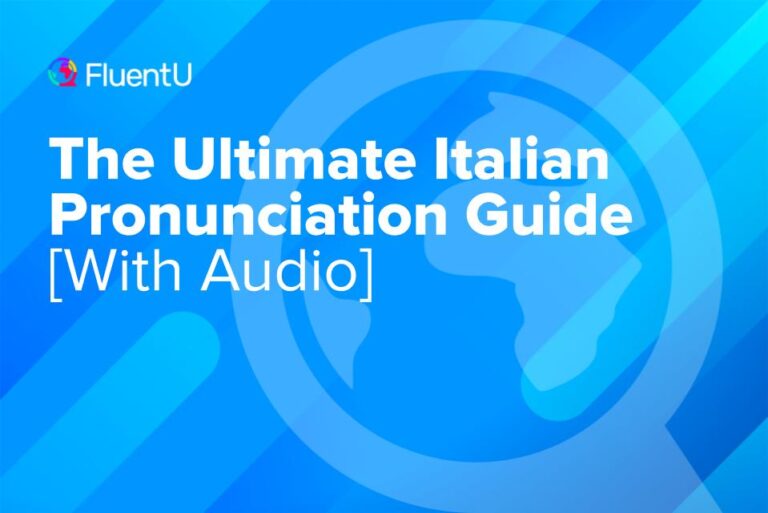Contents
- What Are Italian Conjunctions and Connectives?
- Copulative Conjunctions in Italian
- Conclusive Conjunctions in Italian
- Causal Conjunctions in Italian
- Declarative Conjunctions in Italian
- Disjunctive Conjunctions in Italian
- Correlative Conjunctions in Italian
- Conditional and Concessive Conjunctions in Italian
- How to Practice Italian Conjunctions
- And One More Thing...
Italian Conjunctions: Types, Examples and Usage Notes
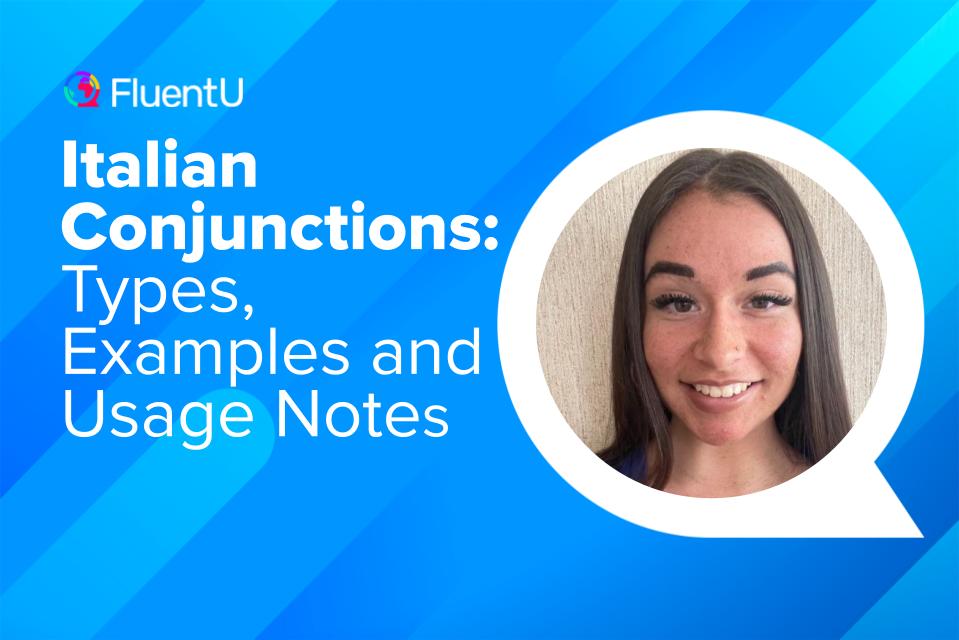
When you first parachuted into the battlefield of learning Italian, you weren’t much concerned with conjunctions and other connectives.
You might have used words like e (and), o (or) and perché (because), without realizing that you were using conjunctions. You can learn conjunctions at any level, but it’s recommended that you have at least some knowledge of basic vocabulary, present tenses, past tenses and the Italian subjunctive under your belt.
Learn about the seven types of Italian conjunctions, along with 30 examples and usage notes, in the post below.
Download: This blog post is available as a convenient and portable PDF that you can take anywhere. Click here to get a copy. (Download)
What Are Italian Conjunctions and Connectives?
Conjunctions are used to link thoughts together.
You use them a lot in English, too!
Conjunctions are part of a group called connectives.
Not all connectives are conjunctions—a distinction that you can bedevil yourself with if you really want (though it’s grammatically loose and varies by language).
Here are 30 common Italian conjunctions before we dive into the different types:
| Italian | English |
|---|---|
| E | And |
| Ma | But |
| Perché | Because |
| Quindi | Therefore |
| O | Or |
| Oppure | Or else |
| Come | Like/as |
| Quando | When |
| Mentre | While |
| Se | If |
| Anche se | Even if |
| Purtroppo | Unfortunately |
| Tuttavia | However |
| Sia...che | Both...and |
| Né...né | Neither...nor |
| Neanche | Not even |
| Cosicché | So that |
| Così | So |
| Invece | Instead |
| Piuttosto | Rather |
| Infatti | In fact |
| Cioè | That is |
| Dunque | Thus |
| Senza | Without |
| Finché | As long as |
| Altrimenti | Otherwise |
| Anche | Also |
| D'altra parte | On the other hand |
| Inoltre | Furthermore |
| Ciononostante | Nevertheless |
Copulative Conjunctions in Italian
Usage: To combine ideas
One of the most basic ways to combine ideas together is by using words like e (and). But you probably already knew that!
Anche (too) and pure (also) are more likely to give you trouble.
They’re used interchangeably and often sound best before an un-conjugated verb or immediately after a conjugated verb. For example:
Anche andare in Italia è bello.
It’s also nice to go to Italy.
Fanno anche la pizza disgustosa a San Paulo.
They also make disgusting pizza in São Paulo.
Ho pure delle opinioni forti!
I also have strong opinions!
In each of these cases, an idea is being continued from earlier, adding on to it.
I once said that second sentence to an Italian who was justifiably complaining about the disgusting slabs of grease and plasticky cheese they sell as “pizza” in New York City. Then came the third sentence.
Conclusive Conjunctions in Italian
Usage: To indicate the result of something
I mentioned allora earlier, an Italian word that—even more than most—seems to beg to be sung.
It can mean “so,” “therefore” and several other things. It connects the first part of a sentence to some sort of result.
Two other conjunctions are used the same way: dunque and quindi.
Sogno Raffaella tutte le notti, quindi dormo bene.
I dream of Raffaella every night, so I sleep well.
Dicono che questo spettacolo di teatro sia deprimente dunque penso di non andarci.
They say that this play is depressing so I’m thinking of not going.
Allora and dunque are also used quite often to start a conversation or lead into a change of subject.
For example:
Allora ti sposi.
So… you’re getting married! (I heard about it earlier but I’m bringing it up now.)
Allora come va?
Hey/well/so/tell me, how’s it going?
Allora, cominciamo!
Listen up, let’s get going!
Dunque, se la sono svignata…
So… they got away with it…
They can be used to lead to a conclusion in a negative way, as well.
Daria: Vieni al concerto con me?
Daria: Are you coming to the concert with me?
Andrea: Sì.
Andrea: Yes.
Daria: C’è pure Raffaella.
Daria: Raffaella will also be there.
Andrea: No, allora non vengo.
Andrea: No, then/in that case I’m not going.
And finally, allora can be used to talk about bygone days.
Sono cresciuto negli anni 80, allora non c’erano i cellulari.
I was born in the 80s, back when there were no cell phones.
Causal Conjunctions in Italian
Usage: To indicate the reason for something
Three ways to show causal connections in Italian are:
- grazie a (thanks to)
- a causa di (because of)
- siccome (since)
The parenthetical translations are quite approximate, and you can get a better sense of how to use them by seeing some examples.
Grazie a is used a lot more often to show cause than “thanks to” is in English. As you might expect, this is used exclusively for results we’re positive about.
Stiamo bene? No! Siamo al settimo cielo grazie a questo buon vino.
Are we feeling OK? No! We’re in seventh heaven thanks to this good wine.
While grazie a sounds slightly better in positive relationships than a causa di, the latter can also be used there.
If we’re talking about neutral or negative things, however, we definitely switch to a causa di.
Abbiamo peccato a causa di quel vino.
We sinned due to/thanks to/because of that wine.
Another way to demonstrate cause is with siccome.
Siccome sono un nomade digitale, posso lavorare dove voglio.
Since I’m a digital nomad, I can work from anywhere.
The word pioché could be substituted for siccome for a more literary or formal tone.
Declarative Conjunctions in Italian
Usage: To give explanations
When we write in English, we’re taught to avoid the boredom of repeating ourselves.
Italians are more accepting of the human tendency to rephrase, rehash and expand on things in speech or writing. They even do so exuberantly.
This can sometimes make the English translations for these connectives sound odd.
Declaratives include ossia, cioè, anzi and vale a dire, which may variously translate as “meaning,” “that is to say” or “in fact.”
Here they are in action:
Padroneggio l’italiano, cioè posso capire pure le persone che biascicano!
I master Italian, that is to say, I can also understand people who mumble!
Lui è un intellettuale, ossia, dice le stesse cose diverse volte e nessuno capisce.
He is an intellectual, by which I mean he says the same things many times and no one understands.
Cioè is the newer of these but it’s very common and is now considered correct in written language.
It can also be used in conversation to request and receive clarification or more information on a subject.
Andrea: Voglio avere una conversazione con te.
Andrea: I want to have a conversation with you.
Raffaella: Cioè???
Andrea: Why?/Concerning?/About what?/Meaning?
Andrea: Cioè sono stufo del tuo comportamento!
Andrea: Meaning/because I’m fed up with your behavior!
Anzi is used when you want to add emphasis to your clarification or the newly introduced information.
Ci vediamo presto, anzi prestissimo, amore!
We see each other soon, in fact, very soon, my dear!
Preferiamo andare in vacanza al mare, anzi, vorremmo vivere in una città di mare.
We prefer to go on vacations at the seaside; in fact, we would like to live in a coastal city.
Anzi can also be used to change your mind in the middle of a sentence.
Andiamo adesso, anzi no, non posso, scusa!
Let’s go now—actually, no, I can’t, sorry!
Since Italians tend to talk over each other, keep some declarative connectives on hand to repeat what you said when you suspect that no one’s been listening.
Disjunctive Conjunctions in Italian
Usage: To indicate contrast
Another way to connect ideas is by showing their differences.
That’s where disjunctive conjunctions or connectives come into play.
The obvious one is o (or), but you’ve probably also run across oppure, which means the same thing.
Ci pensi tu, oppure ci penso io?
You’re taking care of it, or I’m taking care of it?
Another common phrase for contrasts is piuttosto che (rather than). But as we’re about to see, I’d avoid actually using it.
È un’amica piuttosto che un’amante.
She is a friend rather than a lover.
The problem is that Italians now frequently (“incorrectly”) use piuttosto che to mean “and also.”
Change that meaning in the above sentence and what happens? Many (most) Italians would hear it and think that there’s a lot more nooky going on than is intended.
(Italian isn’t the only language where words sometimes come to mean their opposites: English has plenty of contronyms, too.)
If you want to be clear instead of merely “correct,” you could use anziché, which means the same and doesn’t cause confusion.
È un’amica anziché un’amante.
She is a friend rather than a lover.
To say “and yet,” you can use eppure or tuttavia interchangeably, tuttavia being the more literary option.
Lei si scaglia contro me quando è furente, eppure mi ama.
She lashes out at me when she is angry, and yet she loves me.
The word bensì (but, in fact, in reality) can be used to contrast but only after negative phrases.
Non padroneggiano i connettivi letterari, bensì quelli più comuni.
They don’t master their literary connectives, but rather the basic ones.
Correlative Conjunctions in Italian
Usage: To express relationships between ideas
For positive ideas you can use “sia… sia…” The words have several translations in English.
Here’s one example:
Vale la pena andare sia nel nord sia nel sud Italia.
It’s worth going to Italy, whether in the North or the South/both to the North and the South.
“Sia… sia…” shows a parallel relationship while adding a lot more emphasis than just using e (and).
English doesn’t seem to have any structure that does the same thing as beautifully, unfortunately.
Likewise, for negative ideas, we can use “né… né…”:
Non mangio né zucchero né cioccolato.
I don’t eat sugar nor do I eat chocolate.
To compare two items in a similar fashion—but give one particular item a more negative weight than the other—you can use tanto meno (let alone/even less).
Non mi piace la birra di San Paolo, tanto meno la pizza.
I don’t like São Paulo beer and moreover their terrible pizza
In other words, the pizza is even worse than the terrible beer they have there.
And yes, I know there are a ton of Italian learners in São Paulo and yes, I hope you’re reading this. And boy do I hope you get yourselves to Italy to discover real pizza!
Conditional and Concessive Conjunctions in Italian
Usage: To express hypothetical situations and “even though” statements
You just loved tackling the Italian past subjunctive and the conditional, right?
If you know these well, you can use them with some handy connectives to make causal statements about hypothetical situations.
Benché and sebbene mean something like “although” or “even if.”
Note that the stress is on the final syllable for benché.
Benché ci sia uno sciopero, rischierei comunque di andare in treno.
Even if there were a strike, I would risk going by train anyway.
Sebbene si spezzassero le sedie in testa, erano amici fraterni.
Although they smashed up the chairs on their heads, they were close friends.
Another way to say “although” is with pur plus the gerund (-ando, etc.).
Pur non guidando, sanno come arrivare alla stazione.
Although (they’re) not driving, they say how to go to the train station.
Circling back to past subjunctive plus conditional, you can also link the two with anche se (if, even if, although).
Anche se spettegolassero su di me, io continuerei a fare peccati.
Even if they were to gossip about me, I would continue to sin.
And finally, you can use nel caso che (should/if/in the case that) to discuss hypothetical situations.
Like what to do if a goddess should descend from the heavens and inquire about this whole mess we’re in.
Nel caso che la dea scenda dal cielo, ci pentiremo.
If the goddess should descend from heaven, we will repent.
There are a variety of ways to translate that connective in this case: “should the goddess…,” “were the goddess to…”
How to Practice Italian Conjunctions

- Online resources and lists. You can also find lots more connectives categorized into groups here (also at Impariamo Italiano). In the previous two resources, you can further expand your vocabulary by seeing groupings of similar Italian conjunctions.
- Italian dictionaries. You can also search for conjunctions on Linguee. You’ll get snippets in Italian and their English equivalents as conjured by translators on official EU materials and various websites. This can give you a much more complete sense of real-world use than looking up a conjunction in a dictionary.
- Native Italian media. Of course, nothing can beat immersion—but you don’t have to fly to Italy to experience it. Watch tons of Italian movies, TV shows and other types of videos with a resource like FluentU.
FluentU takes authentic videos—like music videos, movie trailers, news and inspiring talks—and turns them into personalized language learning lessons.
You can try FluentU for free for 2 weeks. Check out the website or download the iOS app or Android app.
P.S. Click here to take advantage of our current sale! (Expires at the end of this month.)
Studying connectives is hardly a one-shot deal.
You’ll continue to find more interesting ones—and other uses for the ones you know—for years.
But take heart: Even Italians are in a lifelong battle with them. Hopefully you can share the struggle and, in doing so, connect to Italians themselves.
Download: This blog post is available as a convenient and portable PDF that you can take anywhere. Click here to get a copy. (Download)
And One More Thing...
If you're as busy as most of us, you don't always have time for lengthy language lessons. The solution? FluentU!
Learn Italian with funny commericals, documentary excerpts and web series, as you can see here:
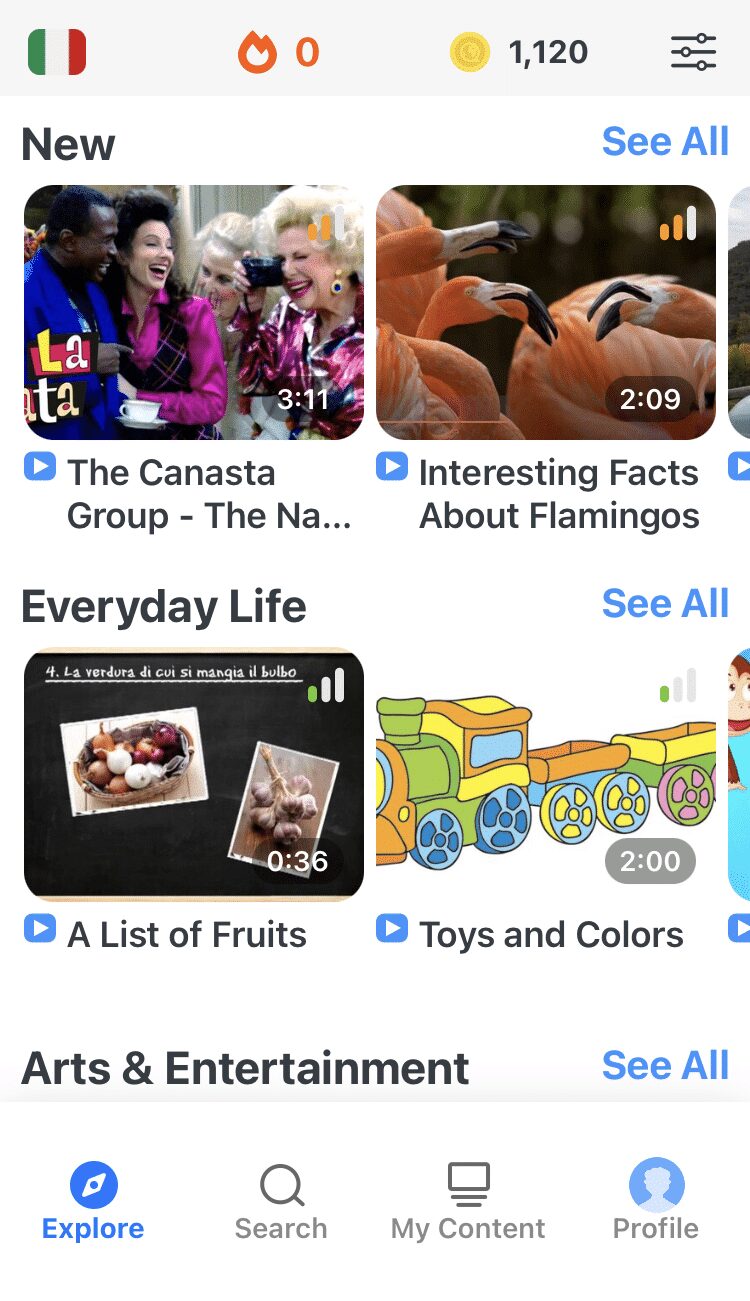
FluentU helps you get comfortable with everyday Italian by combining all the benefits of complete immersion and native-level conversations with interactive subtitles. Tap on any word to instantly see an image, in-context definition, example sentences and other videos in which the word is used.
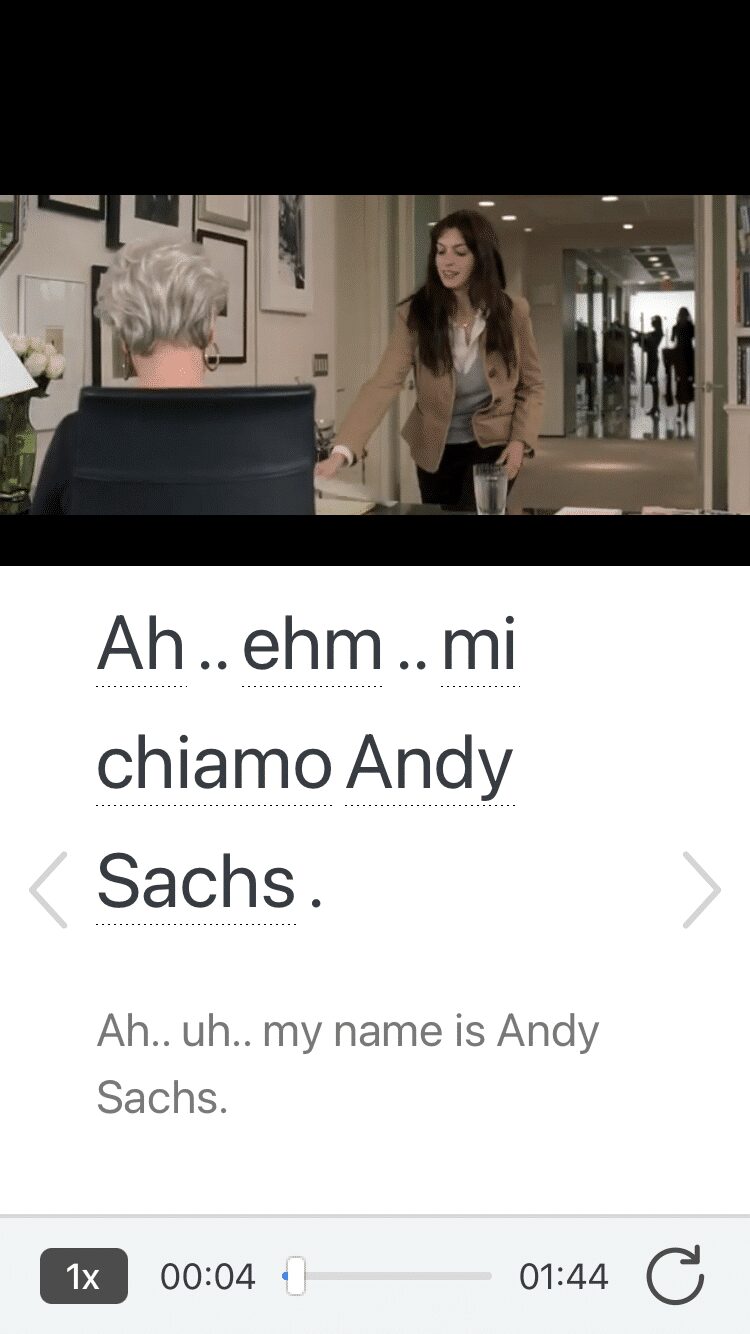
Access a complete interactive transcript of every video under the Dialogue tab, and review words and phrases with convenient audio clips under Vocab.
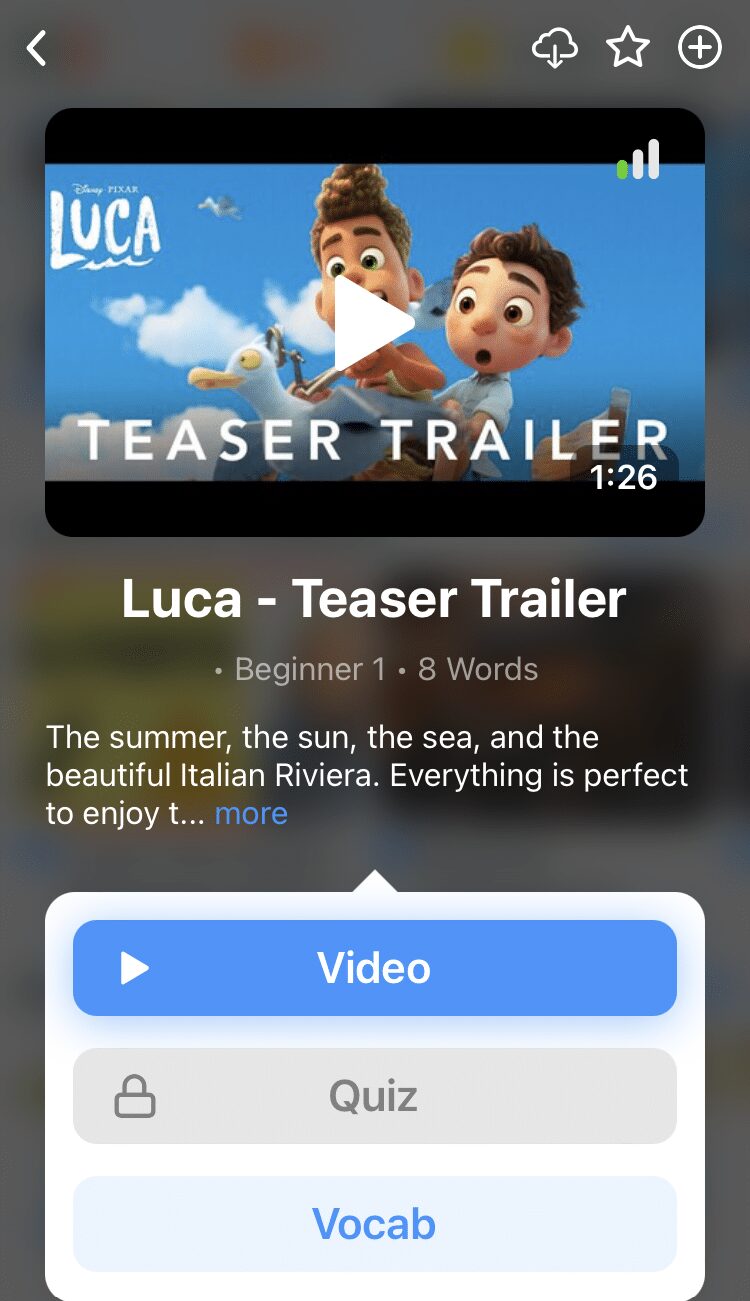
Once you've watched a video, you can use FluentU's quizzes to actively practice all the vocabulary in that video. Swipe left or right to see more examples of the word you’re on.
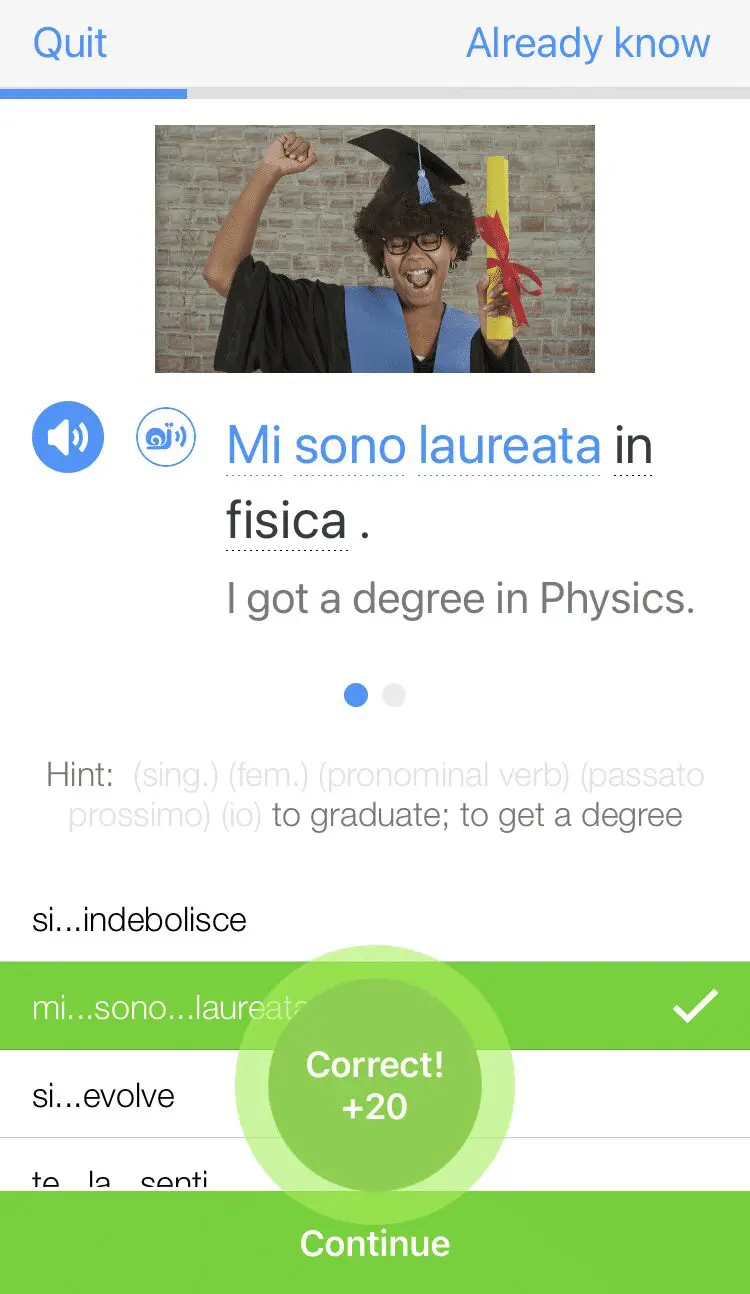
FluentU will even keep track of all the Italian words you’re learning, and give you extra practice with difficult words. Plus, it'll tell you exactly when it's time for review. Now that's a 100% personalized experience!
The best part? You can try FluentU for free with a trial.
Start using the FluentU website on your computer or tablet or, better yet, download the FluentU app from the iTunes or Google Play store. Click here to take advantage of our current sale! (Expires at the end of this month.)


